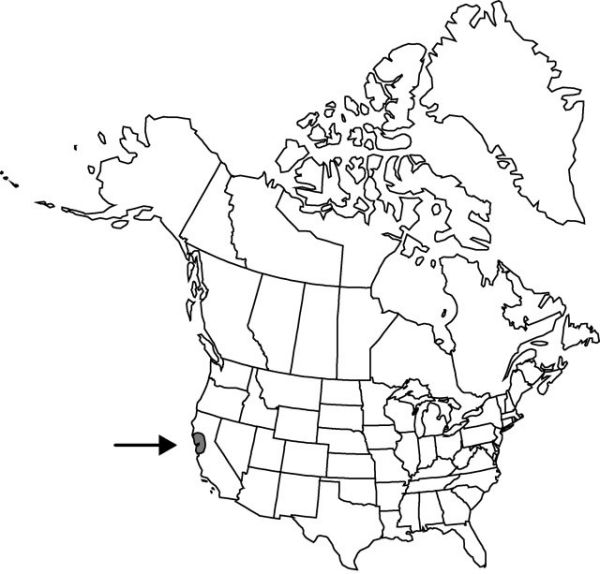Iris fernaldii
Iridis Sp. Nov., 1. 1938.
Rhizomes many-branched, producing dense clumps, compact, slender, ca. 0.6 cm diam., base covered with remains of old leaves; roots fibrous. Stems simple, solid, 2–4 dm. Leaves: basal with blade gray-green, usually brilliantly colored basally, drying to unusual gray-green, veins fairly prominent, to 4 dm × 0.7–0.8 cm, often quite glaucous, margins not thickened; cauline 2–several, spreading, sheathing stem for about 1/2 length, foliaceous, blade not inflated. Inflorescence units 2-flowered; spathes opposite, connivent, often flushed red basally, broadly lanceolate, 5–9 cm × 6–11 mm, subequal. Flowers: perianth pale creamy yellow with gold or gray veins; floral-tube funnelform, 3–6.2 cm, spreading apically to form wide throat; sepals horizontally spreading, claw with deep yellow median line, oblanceolate to spatulate, 4.5–7 × 1–2 cm, base gradually attenuate into broad claw; petals narrowly oblanceolate, 4.3–6 × 0.6–1.4 cm, base gradually attenuate into narrow claw; ovary elliptical, nearly circular in cross-section, 1.5–2.3 cm; style 2.2–3 cm, crests divergent, linear to narrowly oblong, 1–1.7 cm; stigmas triangular, margins entire; pedicel 0.9–2.2 cm at anthesis. Capsules oblong, roundly trigonal, distinctly beaked, 2.5–3.5 cm. Seeds dark-brown, wrinkled. 2n = 40.
Phenology: Flowering Apr–Jul.
Habitat: Mixed evergreen forest
Discussion
Iris fernaldii hybridizes with I. douglasiana, I. innominata, and I. macrosiphon.
Selected References
None.
Lower Taxa
"decreasing" is not a number."dm" is not declared as a valid unit of measurement for this property."dm" is not declared as a valid unit of measurement for this property.
